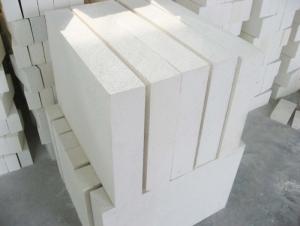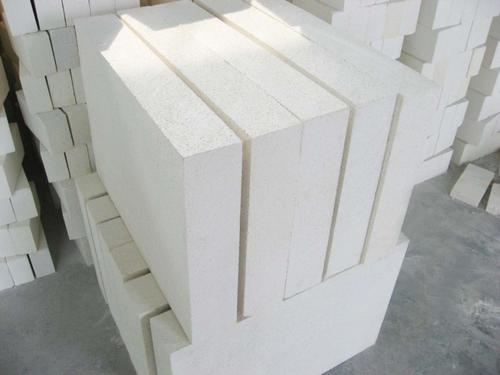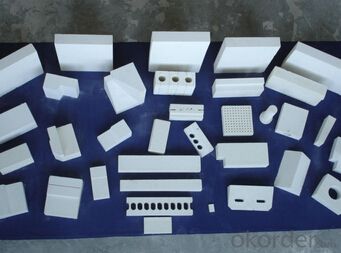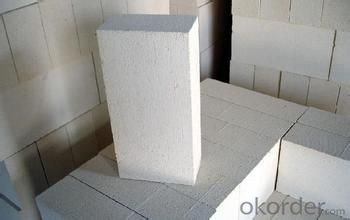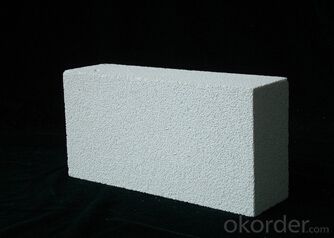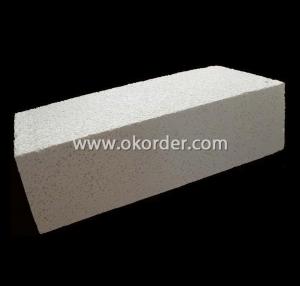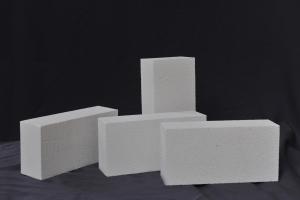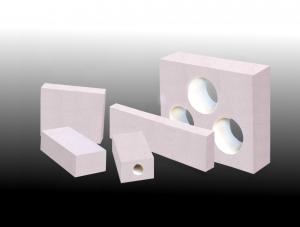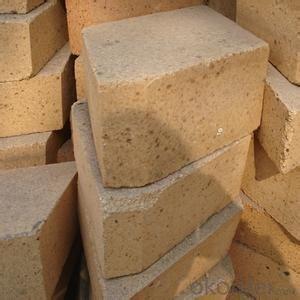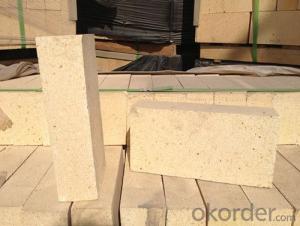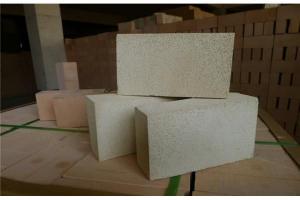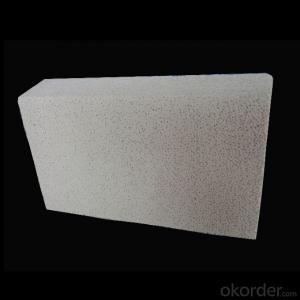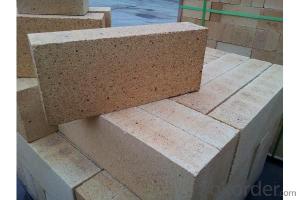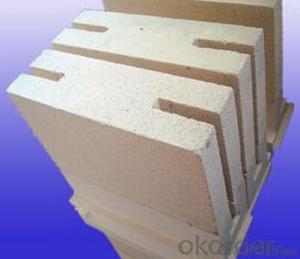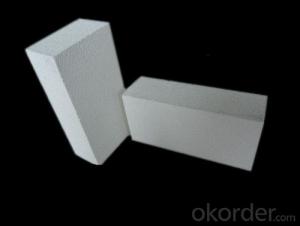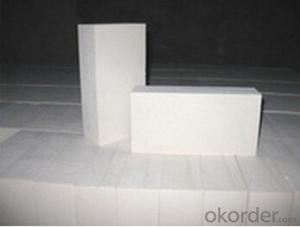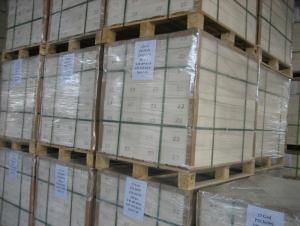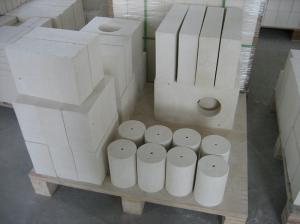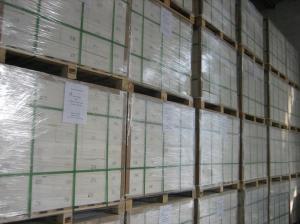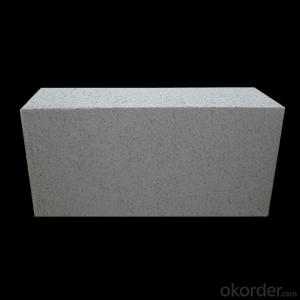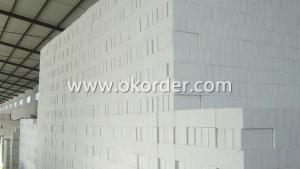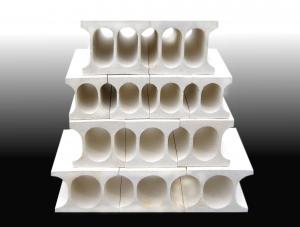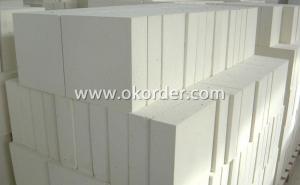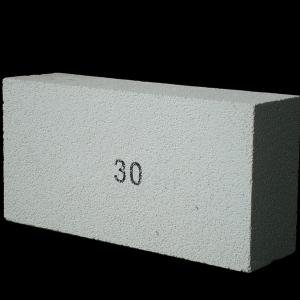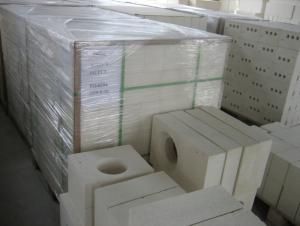Insulating Fire Brick - Refractory Mullite Insulating Refractory Brick JM 30
- Loading Port:
- Shanghai
- Payment Terms:
- TT OR LC
- Min Order Qty:
- 20 m.t.
- Supply Capability:
- 20 m.t./month
OKorder Service Pledge
OKorder Financial Service
You Might Also Like
General Information
CMAX insulating firebricks are classified under temperature between 1300℃ to 1700℃, manufactured from high purity alumina clay.
1. Lower content of iron, alkaline and impurities, good high temperature properties.
2. Homogeneous structure, light weight, energy saving because lower heat storage in the furnace during cooling cycles.
3. High strength, good thermal shock resistance under high temperature.
4. Precise sizes due to grinding and shaping after sintering, which meets the requirement of construction.
5. Max service temp: Up to 1730C (3160F)
Feature
Light weight and low thermal conductivity
Low heat storage
Low iron and impurities
High thermal shock resistance
Application of Insulating brick
Metallurgical Industry: blast furnace, hot blast furnace, heating furnace, etc..
Petrochemical Industry: ethylene cracking furnace, hydrogen furnace, the main furnace, heating furnace, etc..
Ceramic industry: roller kiln, kiln, etc..
Glass industry: glass furnace regenerator, etc.
Carbon industry: carbon furnace, etc..
Aluminum electrolysis industry: aluminum reduction cell, etc.
Other industries: tunnel kiln, shuttle kiln, etc.
Advantages of heat insulation brick
Low thermal conductivity: many air holes will bring good thermal insulation effect, energy saving.
High crushing strength: high crushing strength, volume stability.
Low heat storage: small heat storage, absorb more heat, energy-saving effect is obvious.
Technical Data
ITEM | GJM30 | GJM28 | GJM26 | GJM23 |
Classification Temperature, ℉/℃ | 3000/1650 | 2800/1540 | 2600/1430 | 2300/1260 |
Bulk Density,g/cm³ | ≤1.0 | ≤0.9 | ≤0.8 | ≥0.5 |
Reheating Linear Change, % | ≤0.9 (1550℃,12 h) | ≤0.8 (1510℃,12 h) | ≤0.7 (1410℃,12 h) | ≤0.5 (1230℃,12 h) |
Al2O3 Content, % | ≥75 | ≥65 | ≥55 | ≥45 |
Fe2O3 Content, % | ≤0.5 | ≤0.6 | ≤0.7 | ≤1.0 |
Thermal Conductivity: | ||||
800℃, w/m.k | ≤0.39 | ≤0.37 | ≤0.35 | ≤0.18 |
1000℃, w/m.k | ≤0.43 | ≤0.41 | ≤0.39 | ≤0.20 |
1200℃, w/m.k | ≤0.48 | ≤0.46 | ≤0.43 | --- |
Insulating brick
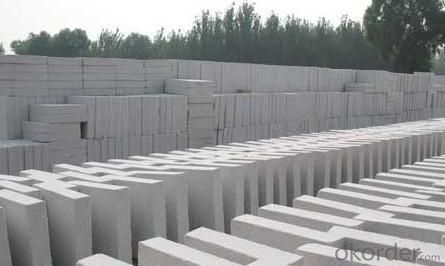
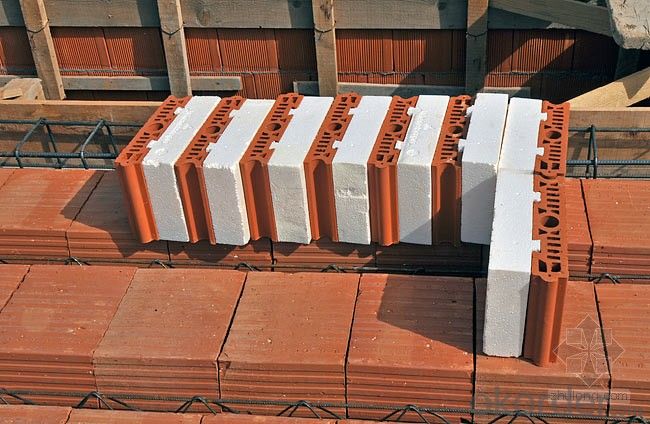
Common problem solution
1. What products do you have?
We have all kinds of refractory bricks, refractory casting materials, mortar, cement, ceramic fiber products, etc..
Or you can browse our products to choose what you need.
2. How to control product quality?
With strict quality control system throughout the material selection and production process, we have the quality of refractory materials and ceramic fiber products to meet customer requirements.
From the selection of raw materials, the quality of our control to start. The quality of the raw materials required for each batch of products in the use of the front line test. In the production process, through the quality control of workers, and then to each piece of classification, and through quality supervision and inspection.
3. Could you give me a brief introduction to the application of your product?
My Company is mainly engaged in steel, cement, glass, ceramics, petrochemical, electric power and other industries.
4. If I need you, what kind of information do you need?
In order to select the right products, we will provide us with information, such as the United States, technical data, order quantity, product applications, etc..
If you have any questions, please contact us.
- Q: Can insulating fire bricks be used as a structural material?
- No, insulating fire bricks are not typically used as a structural material. They are mainly employed for their high thermal insulation properties and are not designed to bear significant structural loads.
- Q: Can insulating fire bricks be used in the construction of lime recovery kilns?
- Yes, insulating fire bricks can be used in the construction of lime recovery kilns. These bricks are designed to withstand high temperatures and provide excellent thermal insulation, making them suitable for such applications. They help to conserve energy and maintain the desired temperature within the kiln, enhancing the efficiency of the lime recovery process.
- Q: Can insulating fire bricks be used for insulation in drying ovens?
- Insulating fire bricks are indeed suitable for insulation in drying ovens. They have been specifically engineered to offer exceptional thermal insulation, which makes them highly suitable for high-temperature applications like drying ovens. Thanks to their low thermal conductivity, these bricks are able to effectively retain heat and prevent heat loss from the oven. Furthermore, they possess a remarkable resistance to high temperatures and can endure the extreme conditions typically present in drying ovens. Moreover, their lightweight design facilitates easy installation and handling. In summary, the use of insulating fire bricks for insulation in drying ovens can enhance energy efficiency, minimize heat loss, and ensure a more consistent and controlled drying process.
- Q: Can insulating fire bricks be used in ladles?
- Yes, insulating fire bricks can be used in ladles. Insulating fire bricks are designed to withstand high temperatures and provide thermal insulation. They are commonly used in applications where there is a need to maintain or control high temperatures, such as in furnaces, kilns, and ladles. Ladles are used for pouring and transferring molten metal or other materials, and the use of insulating fire bricks in ladles helps to minimize heat loss and improve energy efficiency. Additionally, insulating fire bricks can also provide a protective barrier against chemical reactions and erosion caused by the molten materials, making them suitable for ladle applications.
- Q: Can insulating fire bricks be used for insulation in petrochemical plants?
- Yes, insulating fire bricks can be used for insulation in petrochemical plants. Insulating fire bricks have high thermal resistance and can withstand high temperatures, making them suitable for insulation in petrochemical plants where heat containment is crucial.
- Q: Are insulating fire bricks resistant to electrical conductivity?
- Yes, insulating fire bricks are resistant to electrical conductivity.
- Q: Are insulating fire bricks suitable for insulation in cryogenic applications?
- Yes, insulating fire bricks are suitable for insulation in cryogenic applications. Insulating fire bricks have excellent thermal insulation properties, low thermal conductivity, and can withstand extremely low temperatures. This makes them ideal for use in cryogenic applications where insulation is required to maintain the low temperature of the system.
- Q: Can insulating fire bricks be used to line industrial boilers?
- Yes, insulating fire bricks can be used to line industrial boilers. Insulating fire bricks are specially designed to have low thermal conductivity, which helps to minimize heat loss and improve energy efficiency in the boiler system. These bricks are made from lightweight materials such as clay and alumina, which have excellent insulation properties. By lining the interior of the boiler with insulating fire bricks, the heat generated by the combustion process can be contained within the boiler, resulting in higher heating efficiency and reduced fuel consumption. Additionally, insulating fire bricks can withstand high temperatures and thermal shocks, making them suitable for the harsh operating conditions often encountered in industrial boilers. Overall, using insulating fire bricks as a lining material in industrial boilers can contribute to improved energy efficiency, reduced operating costs, and increased durability of the boiler system.
- Q: Can insulating fire bricks be used in residential applications, such as fireplaces or ovens?
- Yes, insulating fire bricks can be used in residential applications such as fireplaces or ovens. Insulating fire bricks are designed to withstand high temperatures and provide excellent insulation, making them suitable for use in these applications. They help retain heat, improve energy efficiency, and enhance safety by preventing heat transfer to surrounding structures.
- Q: Can insulating fire bricks be used in high-temperature ducts?
- Yes, insulating fire bricks can be used in high-temperature ducts. Insulating fire bricks are designed to withstand high temperatures and provide thermal insulation, making them suitable for use in ducts where high temperatures are present.
Send your message to us
Insulating Fire Brick - Refractory Mullite Insulating Refractory Brick JM 30
- Loading Port:
- Shanghai
- Payment Terms:
- TT OR LC
- Min Order Qty:
- 20 m.t.
- Supply Capability:
- 20 m.t./month
OKorder Service Pledge
OKorder Financial Service
Similar products
Hot products
Hot Searches
Related keywords
